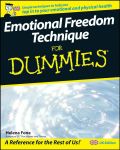
Strategic asset allocation in fixed income markets: a Matlab based user's guide
Nyholm, Ken
INDICE: 1. Introduction. 1.1 Strategic Asset Allocation. 1.2 Outline of theBook. 2. Essential Elements of Matlab. 2.1 Introduction. 2.2 Getting started.2.3 Introductorymatrix algebra. 2.4 Organising data. 2.5 Creating functions. 2.5.1 Branching and looping. 2.5.2 An example of a simple function. 2.5.3 Calling functions in Matlab Rø. 2.6 The linear regression. 2.6.1 The basic setup. 2.6.2 Maximumlikelihood. 2.7 Some estimation examples. 2.8 A brief introduction to simulations. 2.8.1 Generating correlated randomnumbers. 3. Fixed-Income Preliminaries. 3.1 Introduction. 3.2 Spot rates and yields. 3.3 Forward rates. 3.4 Bond pricing functions. 4. Risk and Return Measures. 4.1 Introduction. 4.2RiskMeasures. 4.2.1 Value-at-risk and Expected Shortfall. 4.2.2 Duration and modified duration. 4.3 Fixed-Income Returns. 5. Term Structure Models. 5.1 Introduction. 5.2 Not-Necessarily Arbitrage FreeModels. 5.2.1 Nelson and Siegel. 5.2.2 Svensson and Soderlind. 5.3 Arbitrage-FreeModels. 5.3.1 Vasicek. 5.3.2 Multi-factormodels: an example. 6. Asset Allocation. 6.1 Introduction. 6.2 Efficient portfolios. 6.3 Diversification. 6.4 Theminimumvariance portfolio. 6.5 Asset weight constraints. 6.6 The Capital Asset PricingModel. 7. Statistical Tools. 7.1 Introduction. 7.2 The Vector Auto Regression. 7.2.1 Order of integration. 7.3 Regime switchingmodels. 7.3.1 Introduction. 7.4 Yield curvemodels in state-space form. 7.4.1 The Nelson-Siegelmodel in state-space. 7.5 Importance Sampling. 7.5.1 Some theory. 7.5.2 An example. 8. Building graphical user interfaces. 8.1 Introduction. 8.2 The ‘guide’ development environment. 8.3 Creating a simple GUI. 8.3.1 Plotting the yield curve. 8.3.2 Estimating and yield curve factors. 9. Useful Formulas and Expressions. 9.1 Introduction. 9.2 Matrix operations. 9.2.1 Definitions. 9.2.2 Sum. 9.2.3 Product. 9.2.4 Transpose. 9.2.5Symmetricmatrix. 9.2.6 The Identitymatrix. 9.2.7 Determinant. 9.2.8 Rank. 9.2.9 Inverse. 9.2.10 Trace. 9.2.11 Powers. 9.2.12 Eigenvalues and eigenvectors. 9.2.13 Positive definite. 9.2.14 Matrix differentiation. 9.3 Decompositions. 9.3.1 Triangular. 9.3.2 Cholesky. 9.3.3 Eigenvalue. 9.4 Basic rules. 9.4.1 Index rules. 9.4.2 Logarithmrules. 9.4.3 Simple derivatives. 9.4.4 Simple integrals. 9.5 Distributions. 9.5.1 Normal. 9.5.2 Multivariate normal. 9.5.3 Vasiceks limiting distribution. 9.6 Functions. 9.6.1 Linear (affine) function. 9.6.2 Quadratic function. 9.6.3 General polynominals. 9.6.4 Exponential. 9.6.5 Logarithm. 9.6.6 Error function. 9.6.7 Inverse. 9.7 Taylor series approximation. 9.8 Interest rates, returns and portfolio statistics. 9.8.1 Cummulative arithmeticreturn. 9.8.2 Average arithmetic return. 9.8.3 Cummulative geometric return. 9.8.4 Average geometric return. 9.8.5 Compounding of interest rates. 9.8.6 Portfolio statistics.
- ISBN: 978-0-470-75362-0
- Editorial: John Wiley & Sons
- Encuadernacion: Cartoné
- Páginas: 192
- Fecha Publicación: 12/09/2008
- Nº Volúmenes: 1
- Idioma: Inglés
